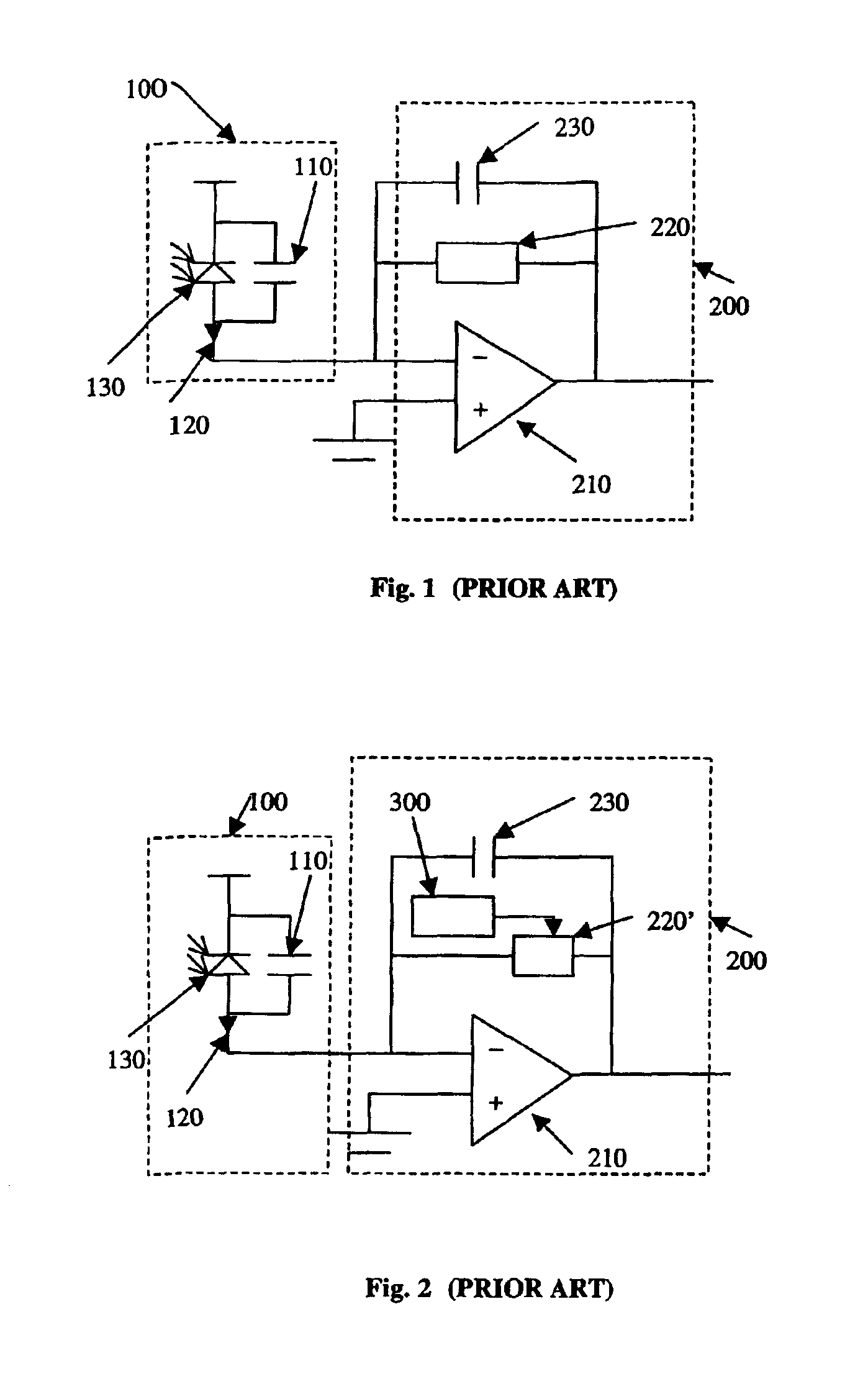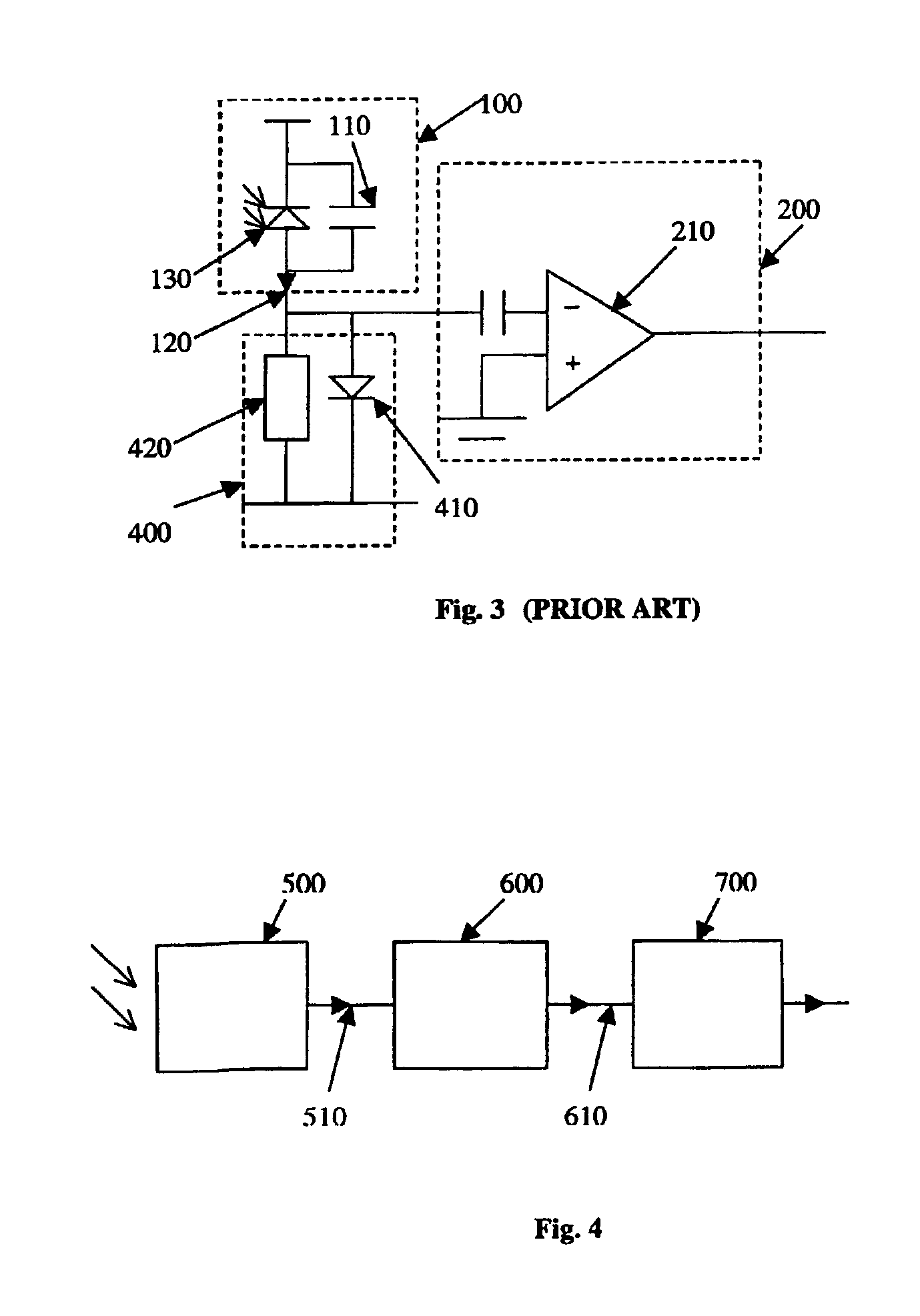Photo-receiver arrangement
a photoreceiver and receiver technology, applied in the field of photoreceiver arrangement, can solve the problems of large design constraints, signal level below the lower bound of the dynamic range is difficult to detect, and the transimpedance amplifier is not able to accommodate the wide dynamic range of photocurrent, so as to achieve the effect of large dynamic rang
- Summary
- Abstract
- Description
- Claims
- Application Information
AI Technical Summary
Benefits of technology
Problems solved by technology
Method used
Image
Examples
Embodiment Construction
[0024]FIG. 4 shows a photo-receiver arrangement that includes a photo-sensor 500, a pre-scaler 600 and a preamplifier 700. The photo-sensor 500 captures light being incident thereon and having a predetermined range of light intensity values, and converts the captured incident light into a first electrical signal. The pre-scaler 600 is connected to an output of the photo-sensor for producing a second scaled electrical signal based on and corresponding to the first electrical signal which is input into the pre-scaler 600. The preamplifier 700 is connected to an output of the pre-scaler 600 to amplify the second scaled electrical signal which is input into the preamplifier 700. The preamplifier 700 has a dynamic range of at least substantially linear gain. The pre-scaler 600 and the preamplifier 700 are designed in a mutually matching configuration such that the second scaled electrical signal falls within the dynamic range of the preamplifier 700 for any light intensity value falling ...
PUM
 Login to View More
Login to View More Abstract
Description
Claims
Application Information
 Login to View More
Login to View More - R&D
- Intellectual Property
- Life Sciences
- Materials
- Tech Scout
- Unparalleled Data Quality
- Higher Quality Content
- 60% Fewer Hallucinations
Browse by: Latest US Patents, China's latest patents, Technical Efficacy Thesaurus, Application Domain, Technology Topic, Popular Technical Reports.
© 2025 PatSnap. All rights reserved.Legal|Privacy policy|Modern Slavery Act Transparency Statement|Sitemap|About US| Contact US: help@patsnap.com



